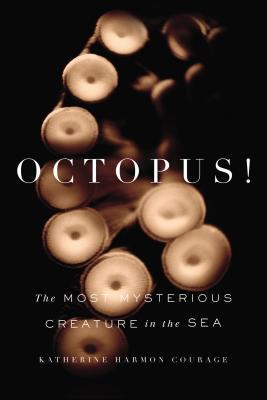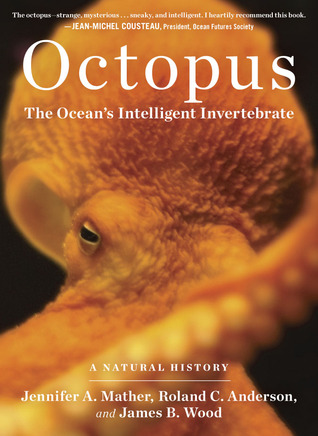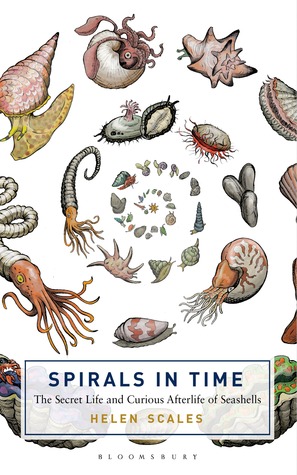 If you’ve ever picked up a seashell and wondered how those shells came to be – what created the seashells that she sells by the seashore? – then Spirals in Time by Helen Scales is the book for you!
If you’ve ever picked up a seashell and wondered how those shells came to be – what created the seashells that she sells by the seashore? – then Spirals in Time by Helen Scales is the book for you!
Starting off with delightful endpapers, Scales takes you through the varied and multitudinous creatures that inhabit these shells and build their homes one layer at a time over time: molluscs. The Mollusca phylum is constituted of invertebrates that live in water… except when they don’t. It’s complicated. To begin with, it’s pretty complicated to even define what constitutes a mollusc when we move away from looking at genetic similarities and onto physical ones. They’re all invertebrates, for one. Although some of them have a cuttlebone, it’s not strictly speaking a vertebrae, so they do all fall under the category. They’re also all… squishy (that’s a technical term*)? What about shells? We’ve been talking about shells! I’m sure it comes as no surprise that although seashells are all made by molluscs, not all molluscs make or make use of shells. Scales sums it up in the first chapter: “Having a soft body and a hard hat is not enough for an animal to be considered a mollusc” (p.26), and “the core concept of what it means to be a mollusc remains deeply contentious” (p.28). This coming from someone who studies them for a living**, or at least wrote an entire book on them.
For all their mysterious origins and shared characteristics (how does one make it into the Mollusca group?), these creatures follow what appear to be rather logical rules in how to build their shells. Indeed, a famous image that you have more like than not have seen is one of the logarithmic spiral that becomes visible after you cut a nautilus shell in half. (The logarithmic spiral is found across the world, and not just in nautiluses.) Scales describes how molluscs (might) make their shells, because for all their diversity of patterns, the process of seashell creation stays remarkably constant throughout the phylum. She also covers the effects of ocean acidification on molluscs that rely on calcium-carbonate shells, as this directly affects how much energy it takes for these organisms to create their homes, leaving less time and energy for food, rest, and sex.
Spirals in Time is remarkably informative and well organized, incorporating anecdotes into what could otherwise present as information-heavy, and if you really only want to read one book on molluscs, this would probably be it.
Interested in more molluscs? Follow me under the cut!
* It isn’t.
**Or at least, she studies marine biology. I don’t really see it in her mini-bio at the back book flap that says she studies molluscs.
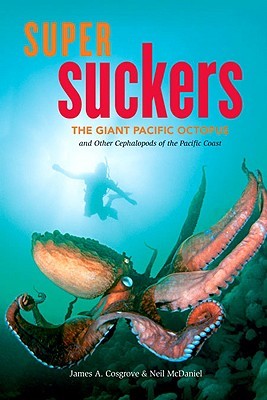 Perhaps you, like me, are absolutely fascinated by cephalopods and their ilk, in which case I would point you in the direction of Super Suckers, by James Albert Cosgrove, which focuses specifically on the Giant Pacific Octopus, although it also gives an overview of other octopuses and a cursory mention to a variety of other animals that live alongside them along the Pacific coast.
Perhaps you, like me, are absolutely fascinated by cephalopods and their ilk, in which case I would point you in the direction of Super Suckers, by James Albert Cosgrove, which focuses specifically on the Giant Pacific Octopus, although it also gives an overview of other octopuses and a cursory mention to a variety of other animals that live alongside them along the Pacific coast.
I didn’t expect this slim volume to be quite as informative as it was, and it contained as many photographs as could be hoped for, all printed on thick, glossy paper, which allows the colours to really pop.
If you’ve read a couple of other generic ocean books, or perhaps one of the two books below, which specifically feature octopuses, then to be honest, I don’t think it covers much that couldn’t be gleaned from the other books I’ve read. Which is not to stop you picking this up though, because while there is a lot of overlap in terms of information, Super Suckers probably has the best collection of photographs in terms of quality that I have seen thus far (Spineless being the exception here). Besides which, what I know about octopuses is a haphazard conglomeration of all the books I’ve read on the topic, meaning that if you haven’t read everything I have, it’s not like there’s just another book that covers exactly the same information. And then there are the photographs, which are worth borrowing the book for, if for nothing else.
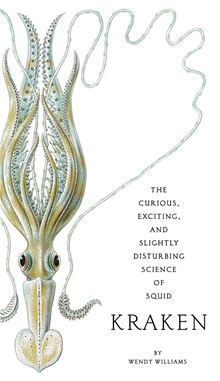 Or maybe you’re all about cephalopods in general, in which case Kraken, by Wendy Williams, is the book for you. Admittedly, Williams does focus a bit more on squid than octopuses or even just cephalopods in general, but it’s fascinating all the same! And she does a great explanation of what cephalopods are: what constitutes a cephalopod and what separates it from its close cousins? Did you know that the nautilus is a cephalopod, shell and all?
Or maybe you’re all about cephalopods in general, in which case Kraken, by Wendy Williams, is the book for you. Admittedly, Williams does focus a bit more on squid than octopuses or even just cephalopods in general, but it’s fascinating all the same! And she does a great explanation of what cephalopods are: what constitutes a cephalopod and what separates it from its close cousins? Did you know that the nautilus is a cephalopod, shell and all?
True to the title, Williams does tackle the slight concern of whether or not a monster such as the Kraken might actually exist, and if so, what those sightings might be of. The answer to that is that there are giant & colossal squid living in the deep oceans, the giant squid at least prey to sperm whales, but whether they are the Kraken? I couldn’t tell you. Beyond dismantling the myth of the Kraken or the Scylla, Williams goes into depth talking about squid, from Humboldt squid to cuttlefish, who do a great job making sure to show their good side to females they want to impress while simultaneously scaring other males away with their amazing control of the chromatophores at the surface of their skin. Other cephalopods have chromatophores as well, allowing them to change colours at will, some species more adept at this than others (think different species of octopus and their varying abilities to morph and change colours). What’s really fascinating, though, is that to the best of our knowledge, octopuses might be colourblind. COLOURBLIND. And still produce their dazzling displays of dizzying complexity, coupled with textural patterns they create from their amorphous bodies, that help them hide in plain sight. Clearly, we have a lot to learn from them (and everything around us, really – let’s be real now).
You might have noticed that I haven’t touched upon two rather obvious candidates for review: Octopus! and Octopus. Because they seem like such perfect fits for this post, I’m going to touch upon why I’m not featuring them in full.
Octopus! by Katherine Harmon Courage v. Octopus by Jennifer A. Mather, Roland C. Anderson, and James B. Wood
This should in theory be a very fair pairing up, but I’ll be honest here: I didn’t actually finish reading Octopus by Mather, Anderson, and Wood. That being said, I think the playing ground is leveled a bit by the fact that I didn’t enjoy Courage’s Octopus! all that much, for reasons I’ll detail below. In this case, when I say I didn’t enjoy it, it was most definitely more of a fear that I held throughout reading that what I was reading might not be scientifically accurate, rather than not liking the style of writing. Octopus! made for quite easy reading, and the people Courage describes throughout come alive with their idiosyncrasies, complete with stories each of them has to tell. In contrast, I had a lot more confidence when reading Octopus (Mather, Anderson, and Wood) that what I was reading was more likely to be accurate. Truly the only deterrence for me was the style of writing – repetitive, blocky sentences which structure never varied much – and formatting: there were asides that were set into the text as a sort of “did you know?” box, which is fine, and I have seen them used with success, except that in this case, I found that they broke up the flow of the main body of text and didn’t have too much of a tie-in. I suppose the best way to describe it is to say that it reminds me of an elementary school textbook: it has the information I want, most likely, but not organized the way I like. As this is mostly an issue of personal taste, I would probably suggest Octopus if you’d like facts and Octopus! if writing style really matters a lot to you. And although it’s the one I didn’t finish, I would probably recommend Octopus over Octopus!.
As always, here’s a roundup of the Dive Into Reading posts that have been and are yet to come. The next and final installment will be coming about a bit later, as I (still) have yet to read what I’m thinking of featuring.
- General Reading
- Spineless
- Cetaceans
- Mollusca
- General Ocean Reading
